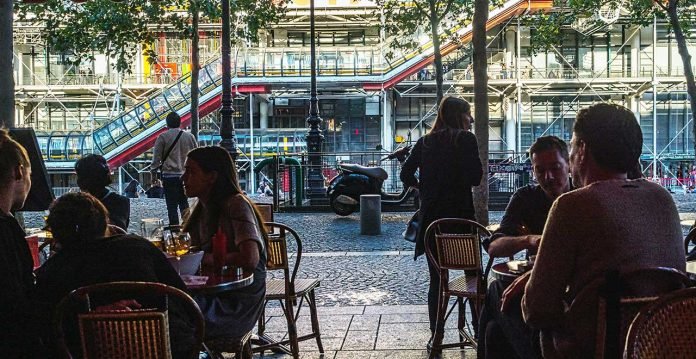The Centre Pompidou is a statement and an enduring symbol of modernity and accessibility in art and culture. The visionary design by Piano and Rogers has stood the test of time and remains a beacon for innovative and interdisciplinary cultural centers worldwide. Today, as we see the Pompidou Centre welcoming millions of visitors each year, we are reminded of its foundational design imperatives — transparency, flexibility, and interdisciplinarity — that continue to inspire architects and cultural visionaries alike.
In the heart of Paris, the Centre Pompidou stands as a vibrant testament to modern art and culture. Conceived as a multifunctional structure for art and culture, it has become one of the most visited cultural institutions in the world. In this article, we will explore the history and design imperatives of the Centre Pompidou and understand why it is considered a revolutionary architectural landmark.
A Brief History
In 1969, the French President Georges Pompidou envisioned a modern cultural hub that would invigorate Paris and provide a center for the arts. The international competition for its design was won by architects Renzo Piano and Richard Rogers, whose proposal defied conventional design norms. Construction began in 1971 and was completed in 1977. Named after Pompidou, the center has since become a beacon for modern and contemporary art.
Design Imperative: Transparency and Accessibility
Piano and Rogers sought to design a building that would be welcoming to all, not just to art aficionados. The Centre Pompidou is notable for its ‘inside-out’ architecture. Many of the functional elements, such as pipes and escalators, are placed outside the building. This radical design freed up internal space for art and cultural activities and also made the building’s function visible to the public. The use of color-coded pipes (blue for air, green for fluids, yellow for electricity and cables, and red for circulation) turned the building itself into an exhibit of sorts. The facade is dominated by a series of transparent glass escalators, which adds a touch of modernity and further symbolizes the transparency and accessibility of culture.
Design Imperative: Flexibility
One of the core design imperatives was flexibility. The architects aimed for a space that could be continuously adapted and reconfigured. The absence of supporting columns in the main exhibition spaces allows for the interiors to be rearranged as required, demonstrating a groundbreaking approach to museum design.
Design Imperative: Interdisciplinarity
The Centre Pompidou is not just a museum; it is a library, a cinema, a rooftop terrace with panoramic views of Paris, and more. The design was envisaged to encourage the cross-pollination of ideas across disciplines – a physical manifestation of the interdisciplinary interaction of art, literature, cinema, music, and the performing arts.
Controversies and Public Response
Initially, the building was met with significant public and critical outcry. Critics labeled it as an ‘oil refinery’ amidst the historic neighborhood of Le Marais. However, as the years passed, opinions have shifted significantly. The Centre Pompidou is now celebrated as a structure that challenged the architectural norms of its time, and it is revered as a Parisian cultural icon.
Renovations and Global Expansion
Over the years, the Centre Pompidou has undergone several renovations to maintain and update its groundbreaking design. Notably, it closed for a significant refurbishment from 1997 to 2000, reemerging with enhanced spaces and facilities.
In recent years, the brand of Centre Pompidou has expanded globally, with branches like the Centre Pompidou-Metz in France and international collaborations, such as the Centre Pompidou x West Bund Museum in Shanghai, reflecting the institution’s broader mission to promote art and culture globally.



















